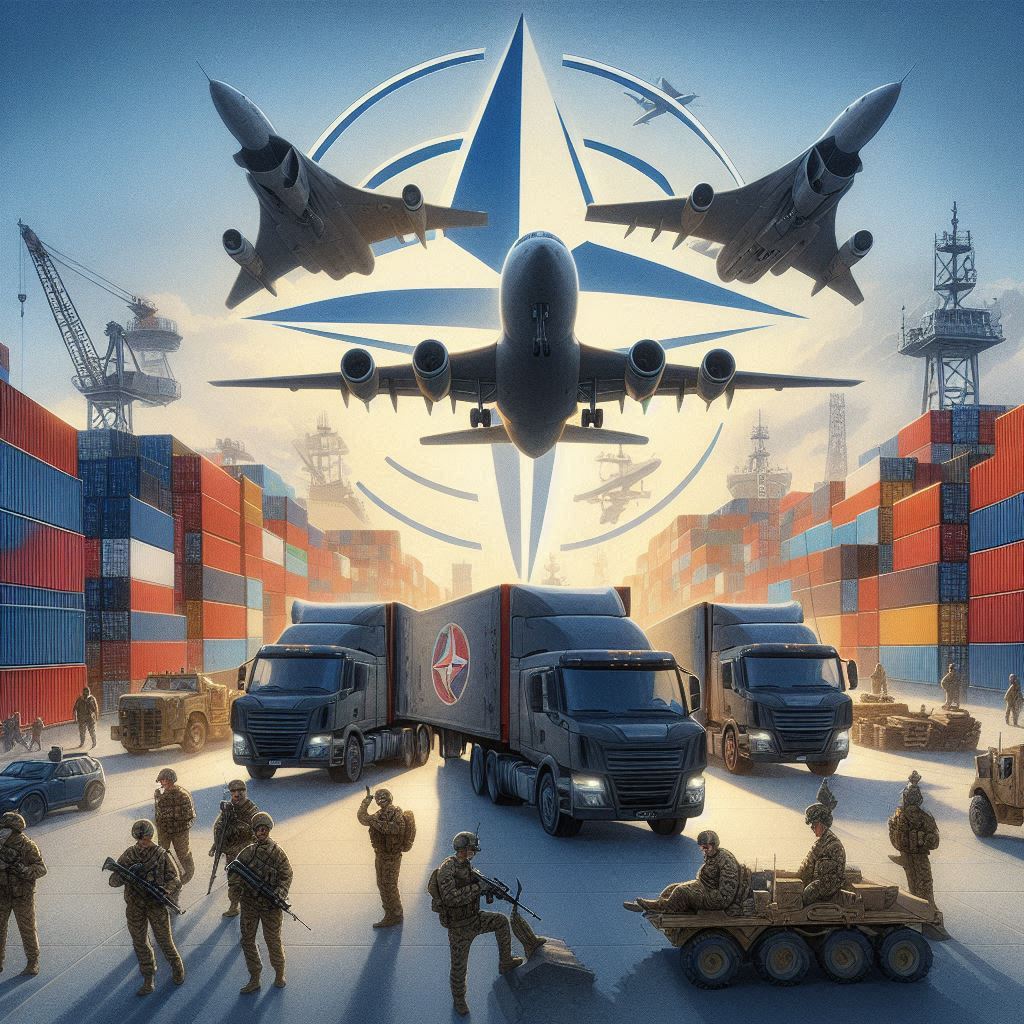Leveraging civilian logistics for NATO defense boosts efficiency and capacity, enhancing operational flexibility. By overcoming integration challenges, we unlock substantial potential, ensuring robust and agile defense capabilities in an increasingly complex global landscape.

Dear Readers,
In today’s dynamic geopolitical landscape, the synergy between military and civilian resources is of paramount importance, especially for defence alliances such as NATO. Leveraging civilian logistics in defence scenarios is not just a theoretical proposition, but a practical strategy to improve operational flexibility and supply chain capacity. In this article, we will explore how NATO can benefit from civil logistics, the challenges involved and the significant potential this collaboration holds for strengthening defence capabilities.
Civilian logistics: a strategic advantage for NATO
In times of crisis, NATO’s use of civilian transport and logistics companies is a strategic move to strengthen its military operations. Civilian logistics companies have an extensive network of resources at their disposal, including vehicles, storage facilities and experienced personnel. This integration can significantly enhance NATO’s ability to rapidly and efficiently deploy and sustain forces in different theatres of operations.
Key benefits of civilian logistics integration
Increased flexibility: Civilian logistics organisations can quickly adapt to the changing requirements of military operations. Their established infrastructure and supply chain management expertise enable rapid mobilisation and distribution of critical supplies.
Increased capacity: The combined resources of civil and military logistics significantly increase overall capacity. This is particularly important for large-scale deployments or prolonged operations where military assets alone may not be sufficient.
Cost-efficiency: Utilising civilian logistics can be more cost-effective than maintaining a large, permanent military logistics unit. This allows NATO to use its resources more efficiently and focus on key areas of defence.
Challenges in civil-military logistical cooperation
While the benefits are obvious, the integration of civilian logistics into military operations is not without its challenges. Effective coordination and seamless integration are critical to overcoming these hurdles.
Coordination and integration: Coordinating civilian logistics with military operations requires careful planning and communication. Both sectors operate under different frameworks and protocols, which can lead to coordination problems. The establishment of joint operations centres and liaison units can facilitate better integration.
Security aspects: Ensuring the security of civilian logistics operations in a military context is of paramount importance. This includes protecting sensitive information, securing supply routes and protecting personnel. Implementing robust security protocols and conducting regular joint exercises can mitigate these risks.
Efficiency and reliability: The efficiency of civilian logistics must meet the high standards required for military operations. This includes ensuring timely deliveries, maintaining equipment reliability and managing logistical risks. Continuous monitoring and performance evaluations can help maintain these standards.
Unlocking the potential of civil-military cooperation
Despite the challenges, civil-military cooperation in the field of logistics holds immense potential for improving NATO’s defence capabilities. By utilising civilian logistics, NATO can create a more resilient and responsive supply chain capable of supporting complex, high-risk military operations.
Strategic recommendations
Develop comprehensive frameworks: Establish clear frameworks and agreements that define the roles, responsibilities and expectations of both civilian logistics providers and military units. This will enable smoother co-operation and shorter response times in times of crisis.
Invest in joint training: Conduct regular joint exercises to improve coordination and build trust between civilian and military logistics personnel. This will also help to identify and resolve potential integration issues before they occur in real-life scenarios.
Expand communication channels: Implement robust communication channels to ensure real-time information sharing and decision making. Modern logistics management systems can provide a unified platform for tracking, monitoring and effectively managing resources.
Focus on innovation: Encourage innovation in logistics solutions by utilising new technologies such as AI, blockchain and IoT. These technologies can improve supply chain efficiency, security and transparency.
Conclusion
Incorporating civil logistics into NATO’s defence strategy is a realistic and beneficial approach to improving readiness and capabilities. While there are still some challenges to overcome, the benefits of increased flexibility, capacity and cost-effectiveness make civil-military cooperation an essential part of modern defence strategies. By fostering strong partnerships and implementing strategic policies, NATO can leverage civil logistics capabilities to ensure robust and flexible defence capabilities in an increasingly complex world.
Your
Thomas Hellmuth-Sander

Schreibe einen Kommentar